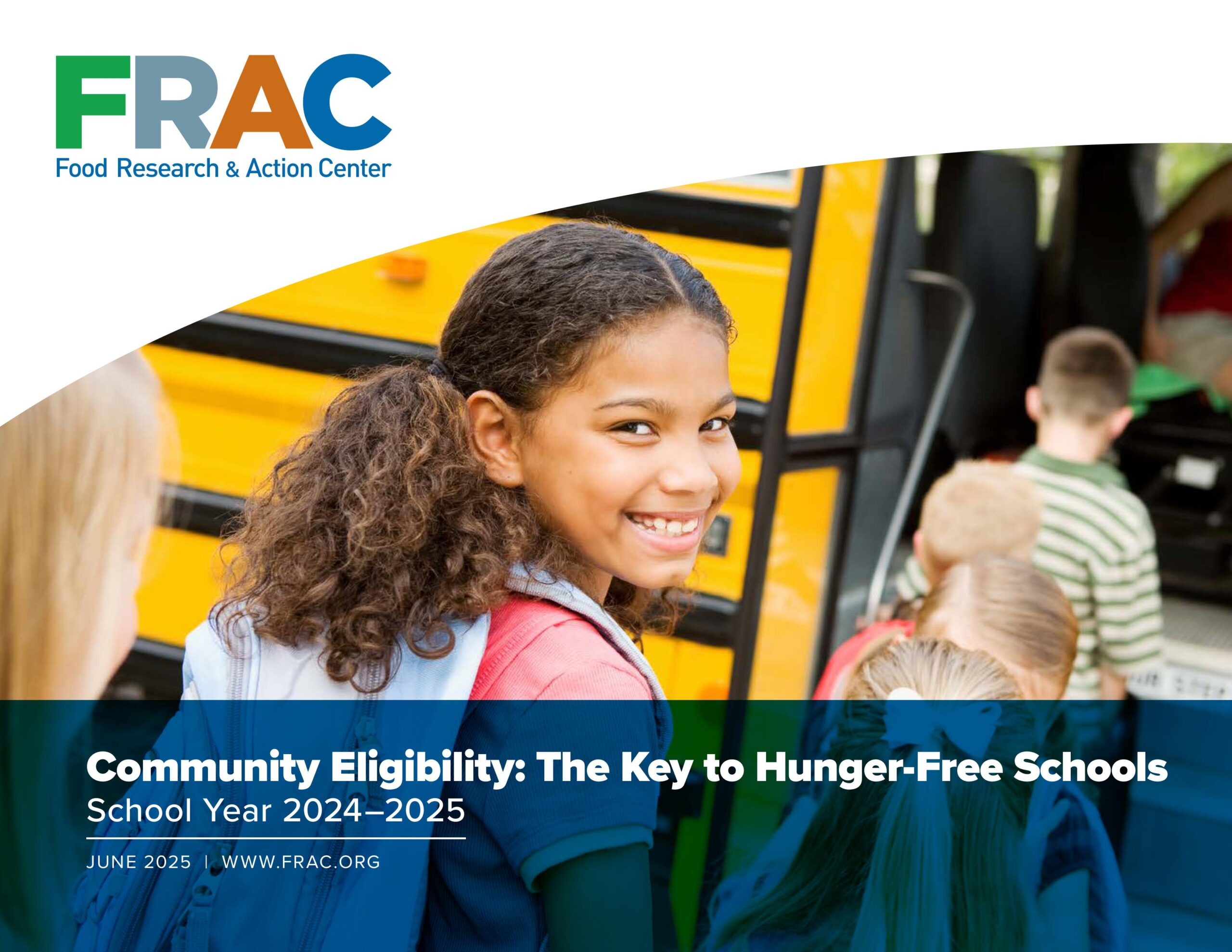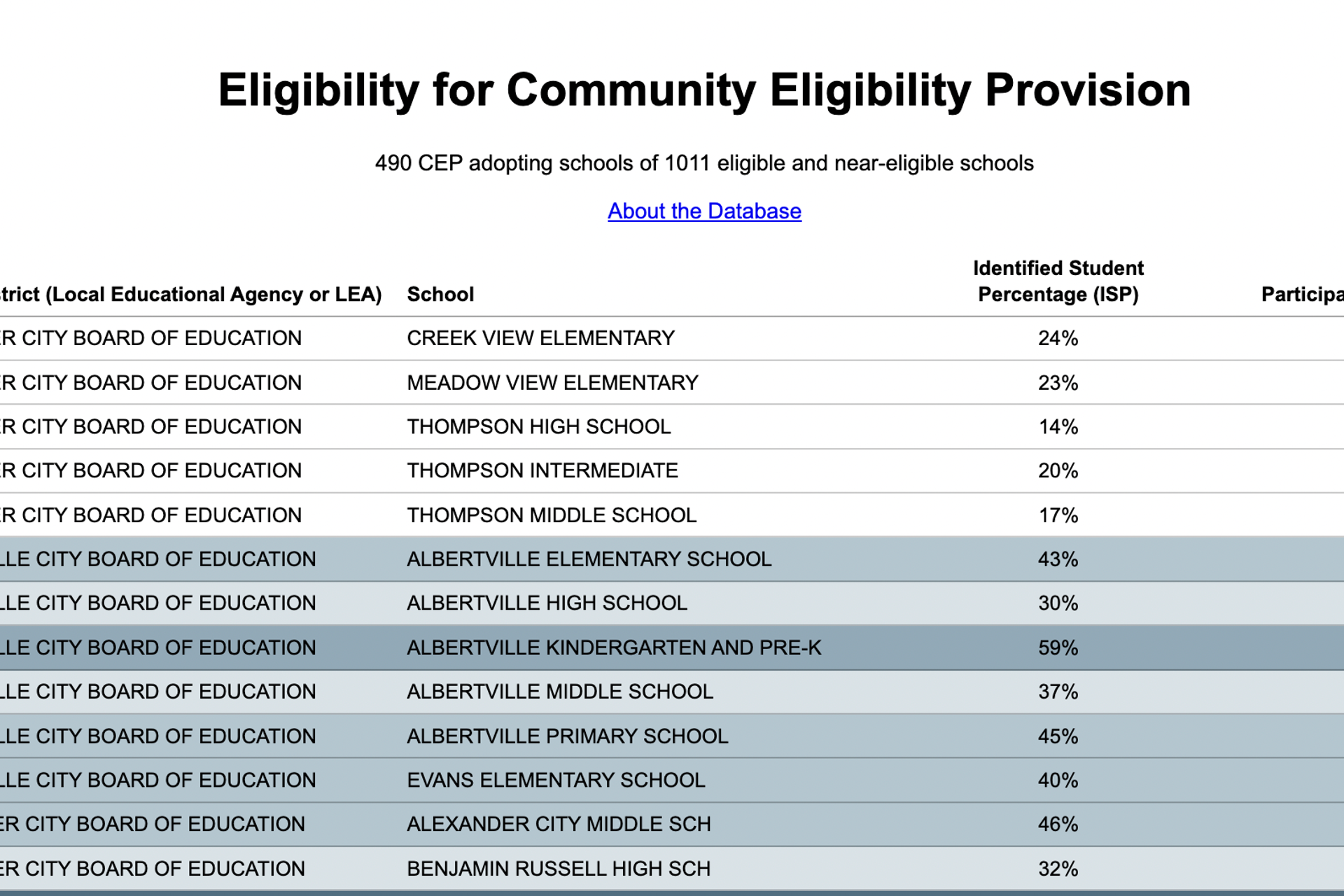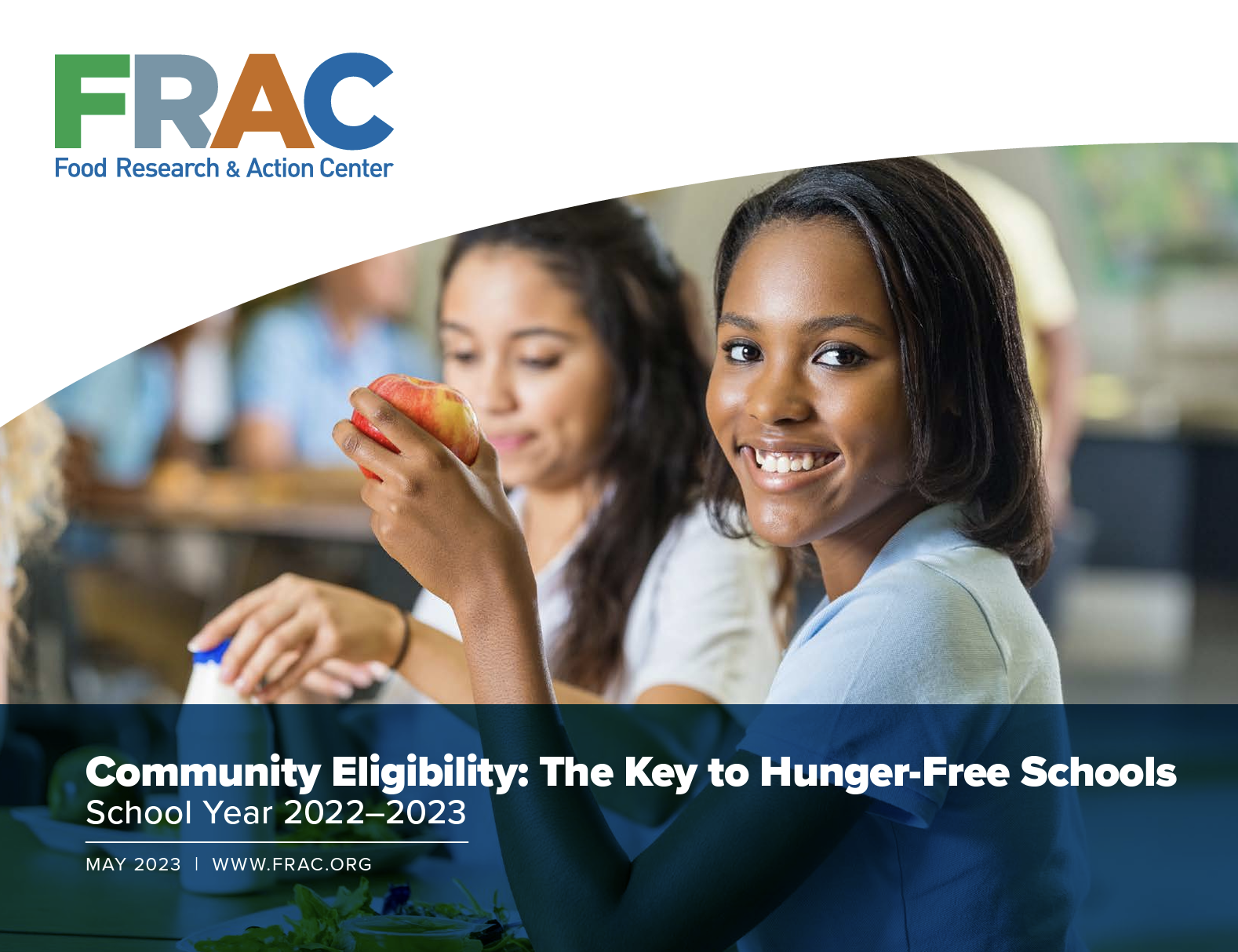More schools and school districts are offering free school meals to all students through the Community Eligibility Provision (CEP), according to FRAC’s latest report, Community Eligibility: The Key to Hunger-Free Schools.
This report analyzes CEP adoption—nationally and for each state and the District of Columbia—in the 2024–2025 school year.
Key Findings
-
- The 2024–2025 school year marked another year of tremendous growth in CEP adoption.
- 54,234 schools adopted CEP, an increase of 6,655 schools (14 percent) from the previous school year.
- 73.8 percent of eligible schools adopted CEP.
- 27.2 million children attended a CEP school, an increase of 3.6 million children (15.3 percent) from the previous school year.
What Is The Community Eligibility Provision?

The Community Eligibility Provision (CEP) allows high-need schools to offer breakfast and lunch at no charge to all students. CEP is a key step towards Healthy School Meals for All – offering free school breakfast and lunch to all students, regardless of their household income.
- Which schools can participate?Any school district, group of schools in a district, or school with 25 percent or more “identified students” – children who are certified eligible for free school meals without a school meals application – can choose to participate. Identified students are children who are eligible for free school meals due to participating in another means-tested federal programs, such as the Supplemental Nutrition Assistance Program (SNAP), or in most states, Medicaid, or because they are in a specific eligibility category, such as being in foster care, Head Start, or are experiencing homelessness.
- How are community eligibility schools reimbursed?Rather than collecting school meal applications, CEP schools are reimbursed based on the percentage of students that are automatically eligible for free school meals without an application, called the identified student percentage (ISP).
Identified students are a subset of those who would be eligible for free or reduced-price school meals if the school collected meal applications. For that reason, a multiplier of 1.6 is applied to the ISP to calculate the percentage of meals reimbursed at the federal free rate. The remainder of meals served are reimbursed at the lower, federal paid rate.
- What's driving CEP adoption?Directly certifying children as eligible for free school meals based on their participation in another means-tested program, such as SNAP or Medicaid, is the basis for CEP eligibility and federal reimbursement. While most students are directly certified for free school meals through household participation in SNAP, the U.S. Department of Agriculture’s Medicaid Direct Certification Demonstration Project has helped link eligible children to free or reduced-price school meals, and has supported schools’ ability to implement CEP. As of the 2024–2025 school year, 44 states use Medicaid and household income data to directly certify children for free or reduced-price school meals. This mechanism – Medicaid Direct Certification – is a catalyst for CEP adoption, increasing school’s ISPs and, in turn, the amount of federal reimbursement CEP schools receive.
This year’s growth in CEP adoption was driven by states initiating Medicaid Direct Certification in the 2023–2024 school year, as well as state policies which provide financial support to schools offering all students school meals at no charge. State-level Healthy School Meals for All policies and CEP subsidies bolster CEP adoption, particularly at lower eligibility levels where federal reimbursement is often inadequate to cover the cost of offering all students free school meals.

FRAC’s CEP Database
Search FRAC’s CEP database to determine which schools in your community or state are eligible for CEP, and which eligible schools are participating in CEP. The database holds data for 50 states and the District of Columbia for the 2024–2025 school year.
SNAP Cuts Threaten School Meals
Every year, CEP reaches more students and helps reduce hunger and stigma in school cafeterias, but that progress is at risk.
The newly-passed budget reconciliation bill that slashes SNAP will have down-stream effects of reducing the number of students who automatically qualify for free school meals. This, in turn, means fewer schools will be eligible for CEP, and those that still qualify will receive less federal reimbursement, making it even more challenging to offer all students healthy school meals at no charge. The cuts to SNAP in the budget reconciliation bill will increase hunger in homes and classrooms across the country.


Community Eligibility: The Key to Hunger-Free Schools 2025
Read the report
Community Eligibility: The Key to Hunger-Free Schools 2024
Read the report
See if your school is eligible!
CEP Database
Community Eligibility: The Key to Hunger-Free Schools 2023
Read the report
